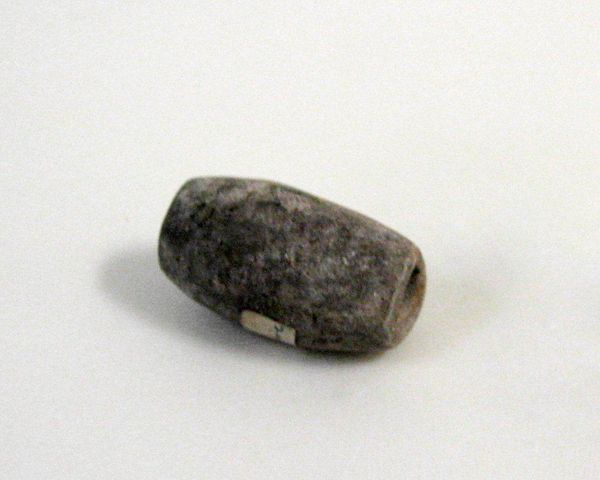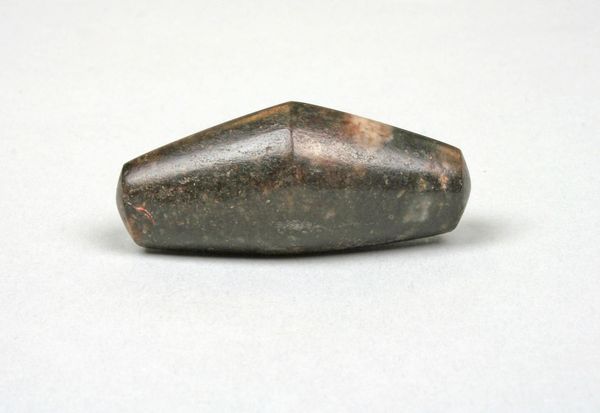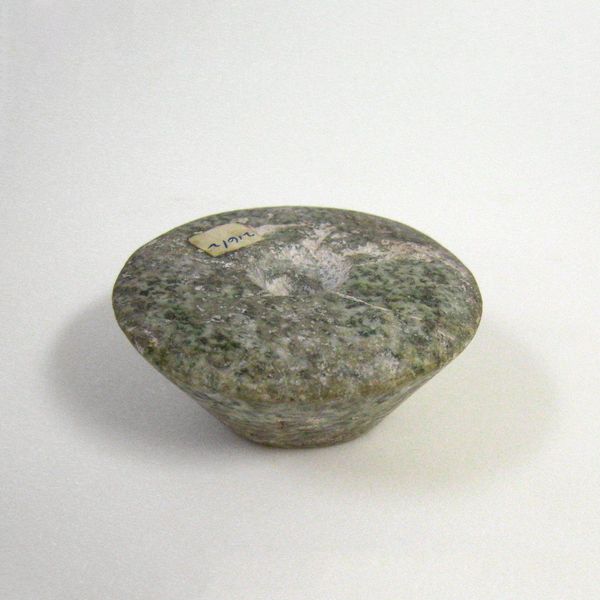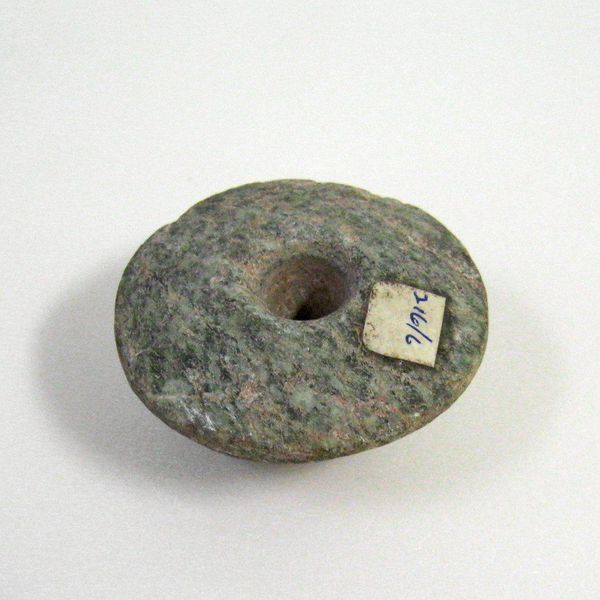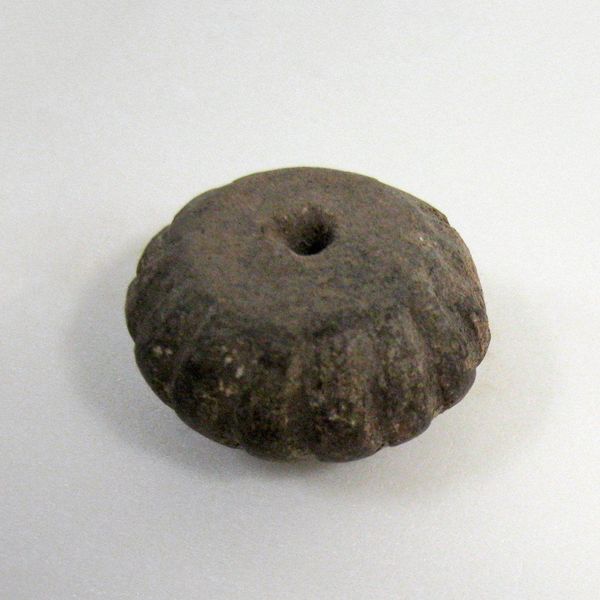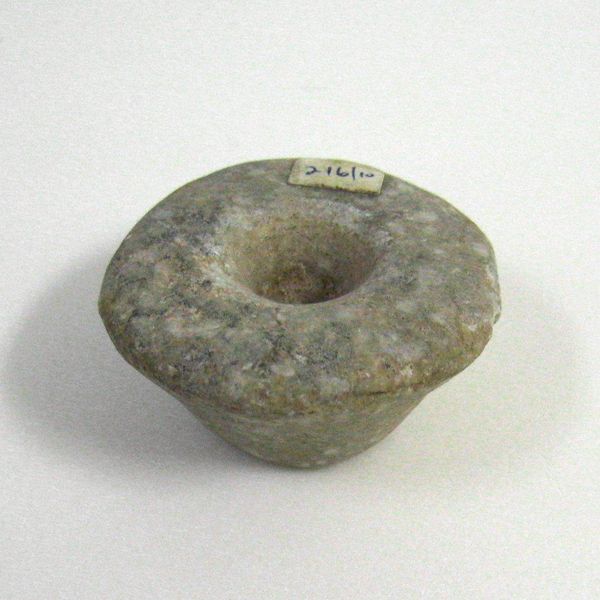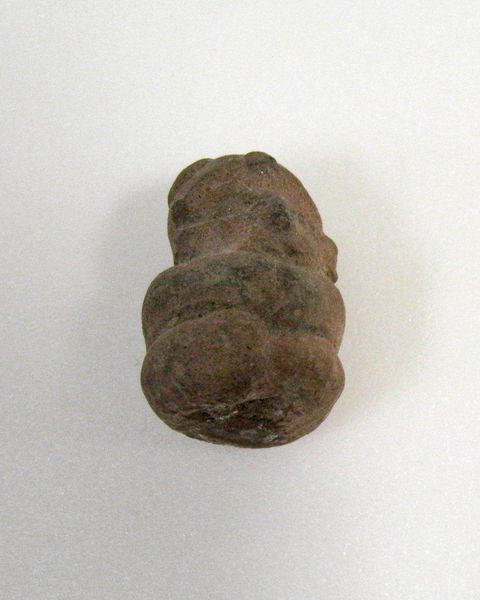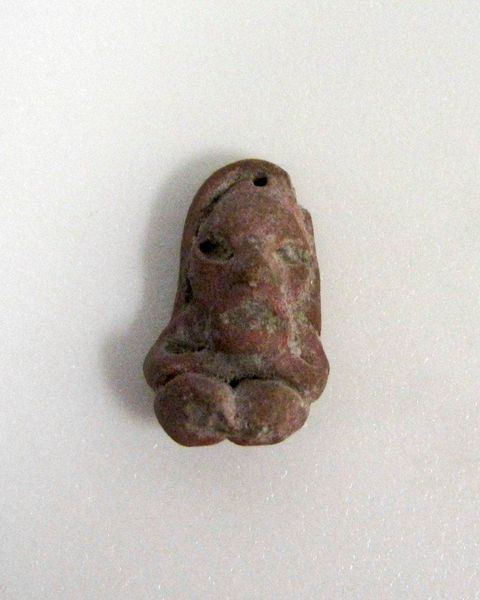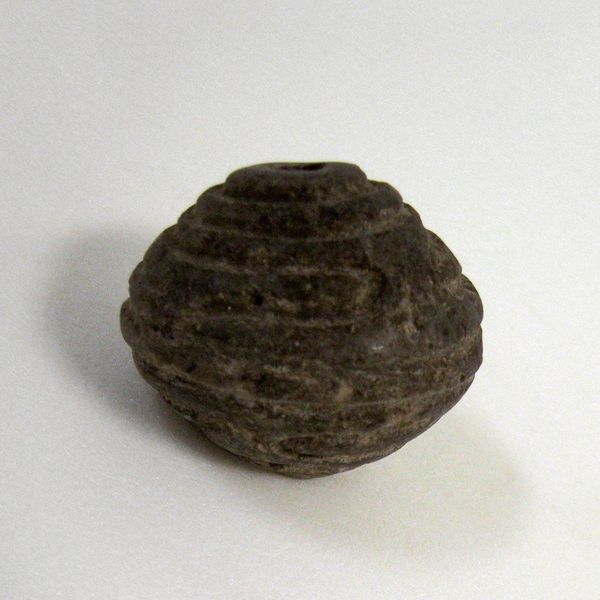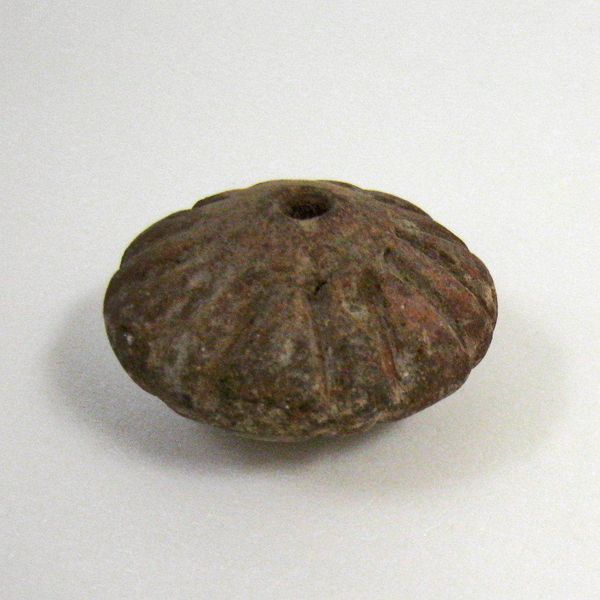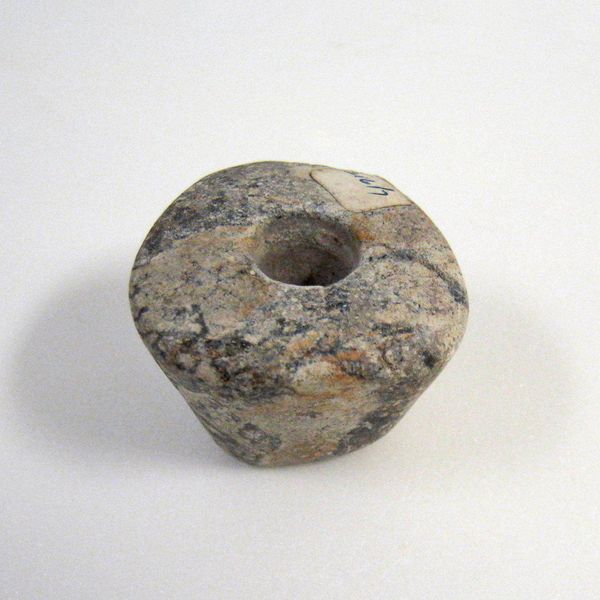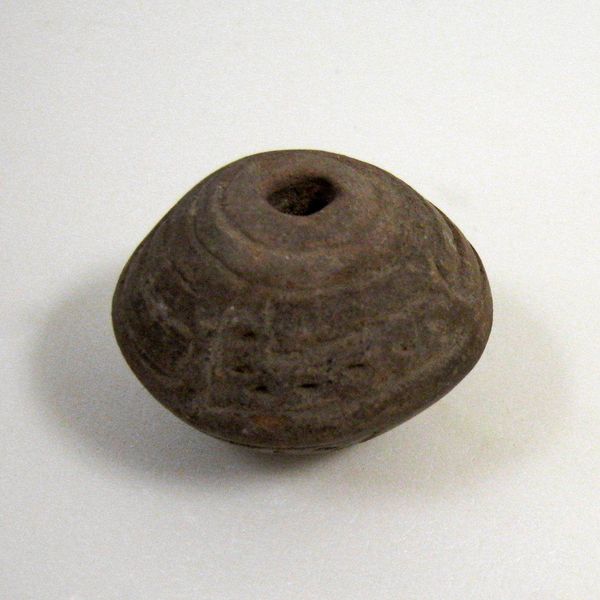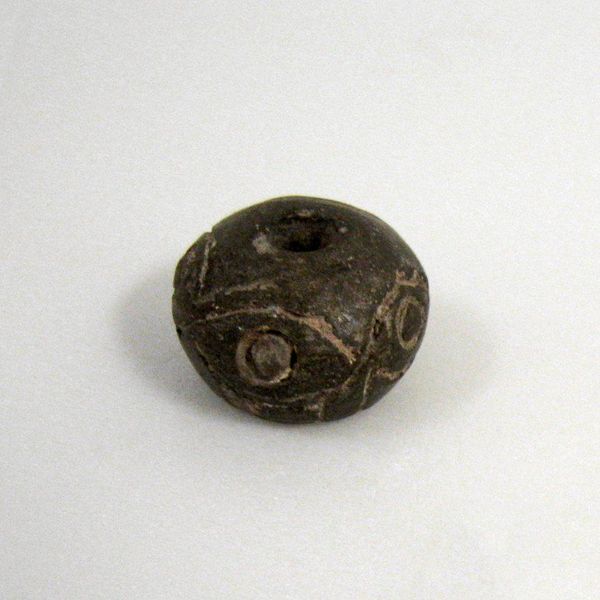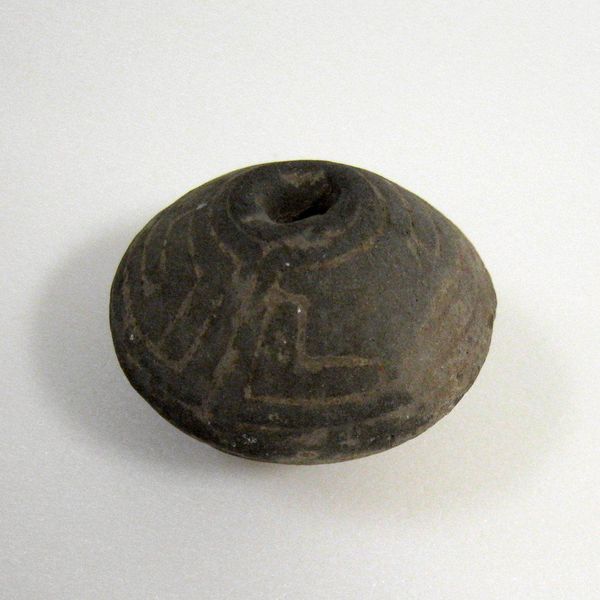
#
fluid rounded line
#
fluid shape
#
3d sculpting
#
3d printed part
#
sculpture
#
plastic material rendering
#
jewelry design
#
sculptural image
#
3d shape
#
mid-section and head portrait
Dimensions: 2 1/8 x 1 1/8 in. (5.4 x 2.86 cm) (varies (largest))
Copyright: Public Domain
Editor: So, we're looking at a "Bead" from around the 15th century, currently housed at the Minneapolis Institute of Art. What strikes me is how simple it is, almost primal. How do you interpret this object, considering its… humility? Curator: It’s interesting you use the word "humility." A materialist approach draws us to the raw materials, and labor embedded in even the simplest objects. The stone itself, its origin, how was it extracted, shaped, and pierced? Consider the skill involved in working with stone tools, the labor… the consumption, as it was a trade good. Its creation transcends the individual; it speaks to communal knowledge and the value placed on adornment. Editor: So, rather than just seeing a pretty stone, we're thinking about the whole network of production behind it? Curator: Exactly. Think about the societal context: who would have worn this? Was it indicative of social status, spiritual belief, or simply personal preference? And what does its survival tell us about the durability of the materials used, the effectiveness of its "design"? The simplicity isn't humble; it speaks volumes about ingenuity and practicality. Editor: It shifts the focus from aesthetic appreciation to the story of the object and its makers. I wouldn't have considered it that way at first. Curator: These beads serve as silent witnesses. They urge us to look beyond the surface and question the economic, environmental and labor systems involved. Every groove, every imperfection hints at the processes. This re-evaluation makes this bead less primitive and more intricate in the tale it tells, wouldn’t you say? Editor: Absolutely, thinking about the labour and trade routes behind this… simple object. It's given me a completely new way to look at art!
Comments
No comments
Be the first to comment and join the conversation on the ultimate creative platform.
